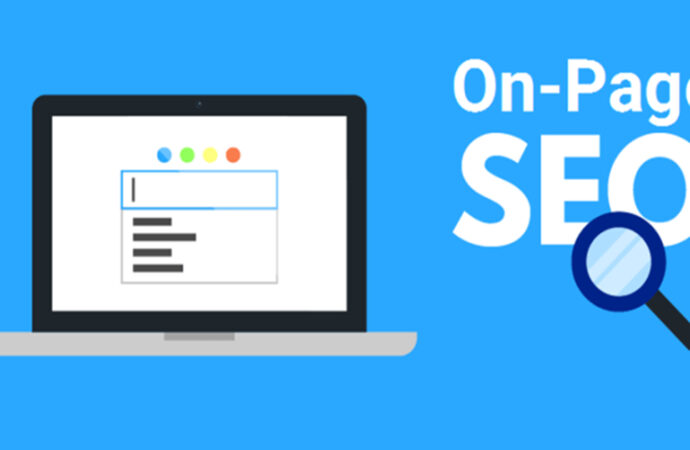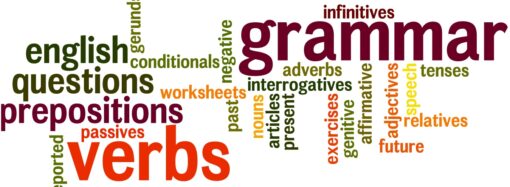On-page SEO is the foundation of every website. That’s why we created a comprehensive 31-Point On-Page SEO checklist to guide you step-by-step through a perfectly optimized webpage in 2021.
On-page SEO is essential to improve your Google rankings. It is often the difference between ranking in the top 10 for a search term and ranking in the 100s. On-page SEO is what Google looks at most when it determines how to rank your site. As of July 2021, there are currently 1.2 billion websites online – so you need to stand out!
It includes techniques like keyword placement, content optimization, and making sure that the site is readable. The importance of on-page SEO cannot be overemphasized as search engines are constantly changing their ranking algorithms to provide users with the best possible answer.
On-page SEO is the low-hanging fruit of SEO. It’s the stuff that you have control over on Google, and can change up on your website at any time. Because you get to choose what content is on your pages, it’s even more important to put the right content on your pages.
One wrong move and you can deplete your rankings and risk penalization. One right move and you’re at the top of the SERP.
Here’s everything you need to know to nail your on-page SEO:
1. Setup Google Search Console
Google Search Console is a free service from Google that allows website owners to check their site’s search performance, diagnose problems with crawling and indexing, and improve their site visibility in organic search results.
To set up Google Search Console you need to log into your Google account and click on the “Search Console” link in the sidebar menu. If you don’t have a Google Account, you can create one by clicking on the “Sign Up” button at the top of the page.
Google Search Console can be used to improve SEO efforts on your site. It allows you to see what pages of the site might need more optimization so that they rank higher in Google search results.
2. Setup Google Analytics
Analytics is another important free Google tool for analyzing and measuring the traffic coming to your site. It helps to know which content is popular and what the traffic patterns are. Google is the number one search engine in the world, so it’s vital to have an accurate picture of your site’s performance with them.
GA can tell us about where our visitors come from, what they do once they visit our site, how long they stay, your most popular pages, and a lot more.
3. Install Rank Math
The Rank Math plugin is a useful free tool for webmasters and digital marketers who want to improve their SEO and Google rankings.
The plugin calculates the probability of a site appearing in the top ranks of Google for any given keyword. The more accurate the data you provide, the more accurate your results will be.
Rank Math also offers advanced features to boost your site’s visibility, including microformats, schema markup, PHP snippets, and social media meta tags. Using the plugin can help you rank higher in Google SERPs by following their easy-to-follow guides.
4. Use long tail keywords
We should use long-tail keywords in the B2B SEO strategy because it is a good way for us to rank higher than our competitors with less competition.
For example: “Best cat” will be a very difficult keyword to rank for because of the high amount of competition it’ll have. But something like “Best cat for busy New York lifestyles” will be easier to get onto the first page of Google, especially for newer websites. High-end tools like AHrefs will help you find keywords you can target.
5. Include Your Keyword In Your URL
The URL of a web page can be optimized for SEO purposes by including keywords in it. This will help Google find your web page faster and rank it higher in search results pages.
A URL should also not have too many words or characters, for instance, “www.example.com/about-us/our-mission.” Instead, it should be shortened to “www.example.com/mission.”
Short URLs rank highest on Google, according to research of 11.8 million Google search results.
6. Embed Title Tag Modifiers
One of the most important things you can do for on-page optimization is to include title tag modifiers.
These title tag modifiers are HTML tags that you insert in your web page’s tags. They are typically used in combination with keywords and phrases, and they help search engines (such as Google) find your page more easily in their search index.
One way that these modifiers improve SEO is by telling the bots how to parse the content on each individual web page, which allows them to understand how it should be indexed.
7. Use Your Keyword Once In The First 150 Words
Search engines like Google take into consideration many factors when ranking pages. One of these factors is keyword density. This means that you should use your keywords once in the first 150 words on your page to improve your SEO and Google rankings.
8. Use H1, H2, and (where appropriate) H3 tags
H1, H2, and H3 tags are important for SEO. They help Google’s crawlers to understand the content’s meaning.
H1 tags should be used once per paragraph or section. This way it will be easier for Google to know what your site’s contents are about. In addition to this, using H2 headings will also provide additional information about your page content for your visitors
9. Optimize Images
Images are one of the most important aspects of your website and if you optimize them you can improve your search engine rankings and also your click-through rates.
If you optimize images for SEO, you will:
1) Have better search engine rankings
2) Improve user experience and conversions
3) Increase visibility on social media.
Budget-friendly tools like ShortPixel compresses your pictures to speed up website load times. When you add images to your website, they are instantly optimized. You’ll save time and your site’s performance will improve.
10. Make Sure Your Site is Mobile-Friendly
It’s important to make sure that your site is mobile-friendly and optimized for search engines in 2021. A lot of people use their phone or tablet to look things up on the internet, and if your page isn’t optimized for this, it’ll rank poorly in search engine results pages.
It’s also important to make sure that your site is responsive. If you don’t, it’ll be hard for people to read your content on a smaller screen.
Bonus – other things to keep in mind:
- Keep your site loading fast by using a zippy, free theme like Astra or Generate Press.
- Similarly, choose a web host that will keep your website’s load speeds to a minimum. Recommended companies for newbies include NameHero, SiteGround, and DreamHost.
- Use paragraphs liberally. No one likes a wall of text.
- Implement Schema Markup using Google’s Structured Data Testing tool
- Use multimedia on your pages to your advantage. These help make your website easier to consume and include things like Images, Charts, Infographics, Videos, and Interactive polls or quizzes.
- Build Backlinks. Methods include guest posts on other sites, being a guest on Podcasts relevant to your niche. You can also mention Influencers in articles and let them know about it – they might link to you from their website or Socials.
- Optimize Your Site for Click-Through-Rate. One of the key factors in SEO that determines ranking success are click-through rates, which are determined by how many people click on a website link when it appears in search engine results pages. If you want to improve your rankings, make sure you optimize every page of your site for this important metric.
Conclusion
The objective of SEO on-page optimization is to improve the visibility of a website in search engine results pages (SERPs) – especially Google’s.
Optimizing the on-page content is often done by ensuring that keywords relevant to a website’s business or industry are used properly and that HTML tags such as headings, meta descriptions, and keywords are used appropriately. The tips above will give your website a solid SEO foundation to build traffic on and take your business to the next level.
Yes, we covered a lot, and hope you found this checklist helpful. What tip, or strategy from today’s on-page SEO checklist are you going to try first? Maybe it was the use of original images? Or adding modifiers to your title? Either way, let me know by leaving a comment below!
Is on-page SEO something that your business or organization struggles with? If so, we can help. On-page SEO is just one of the SEO services we offer for our clients.



















Leave a Comment
Your email address will not be published. Required fields are marked with *